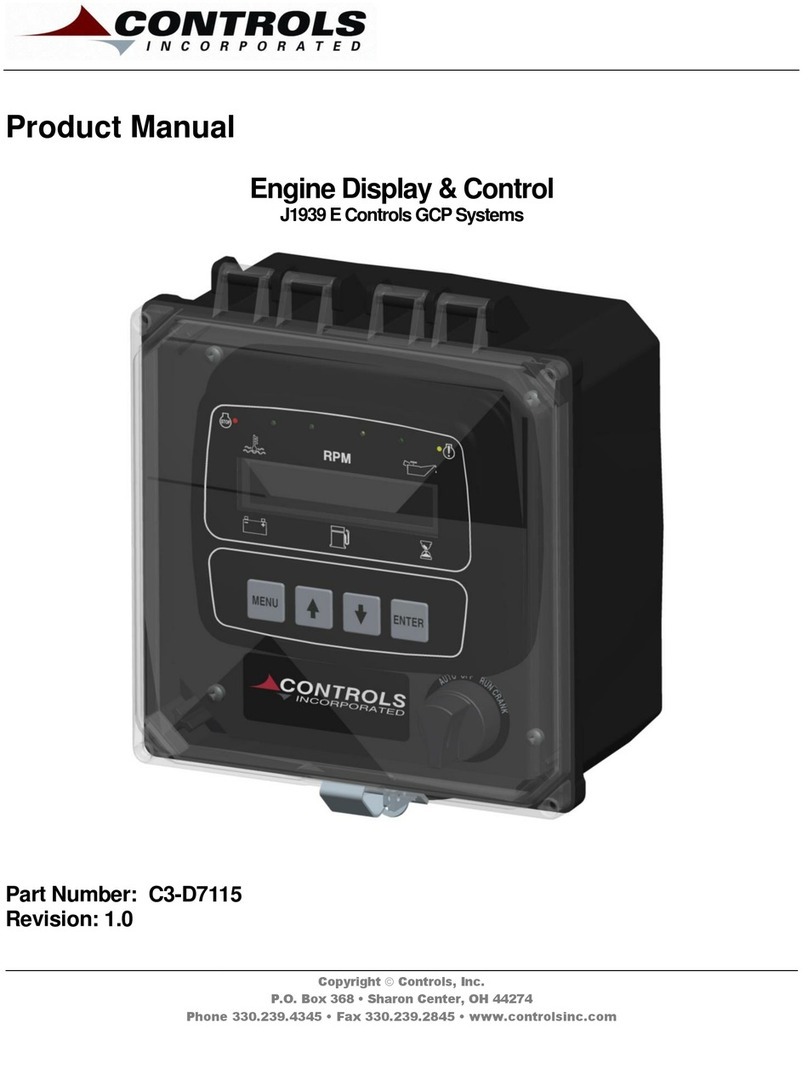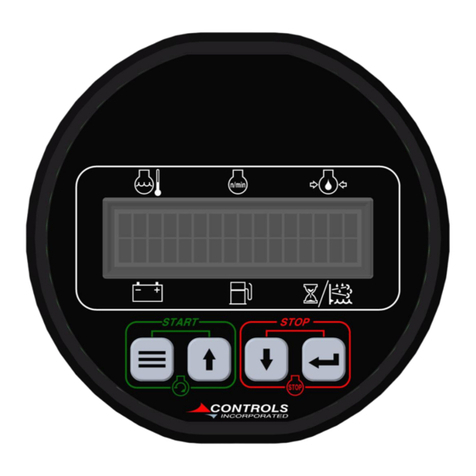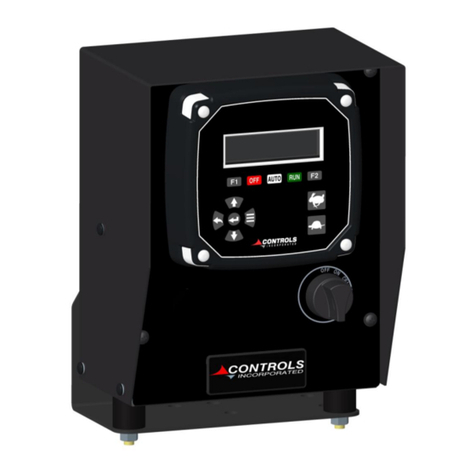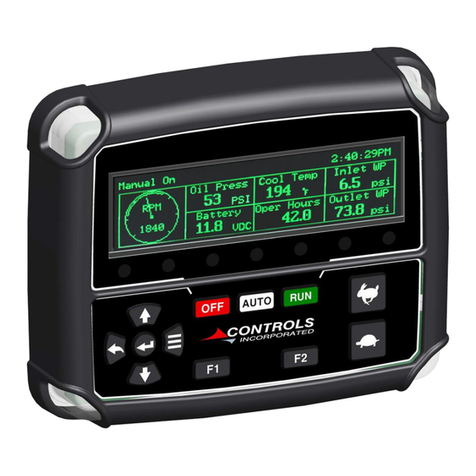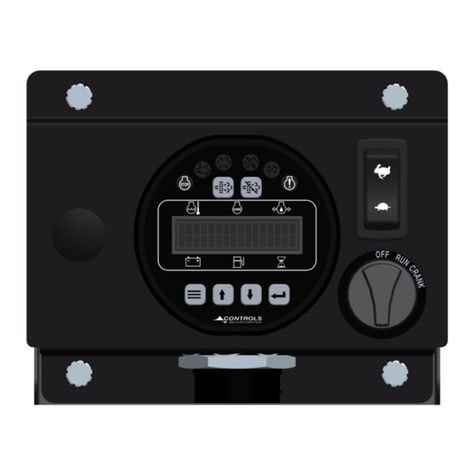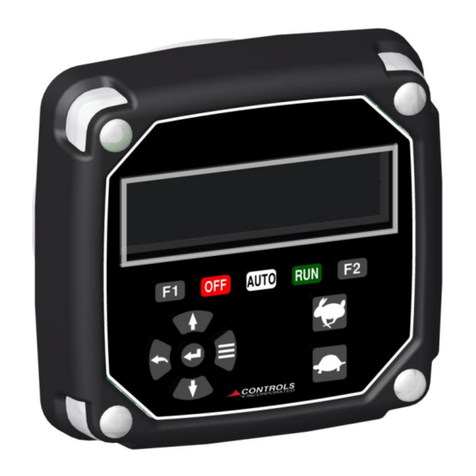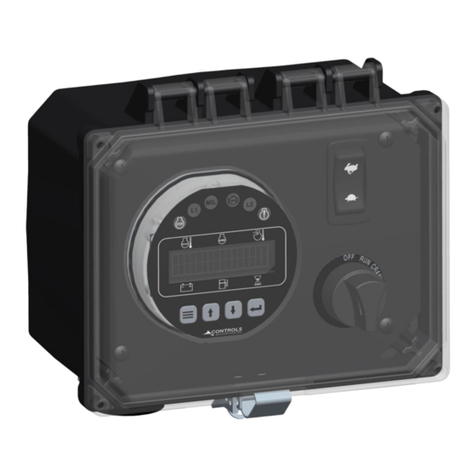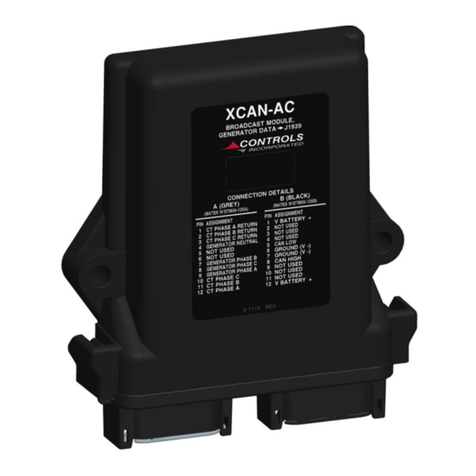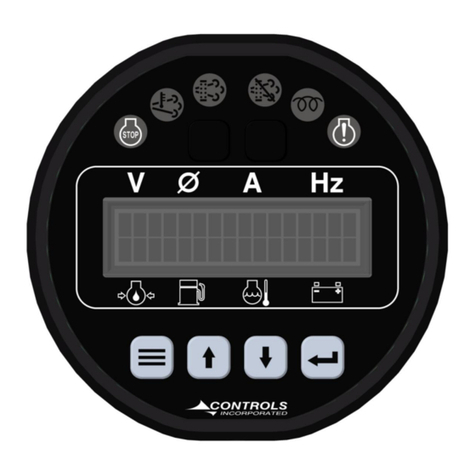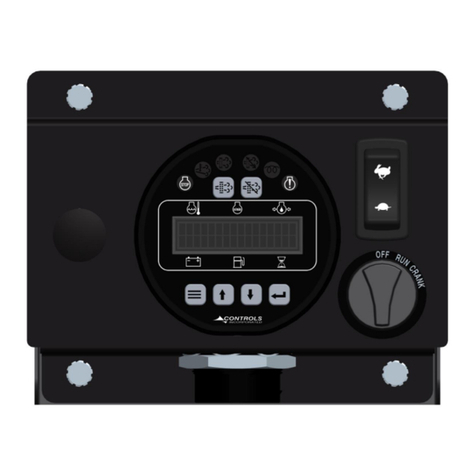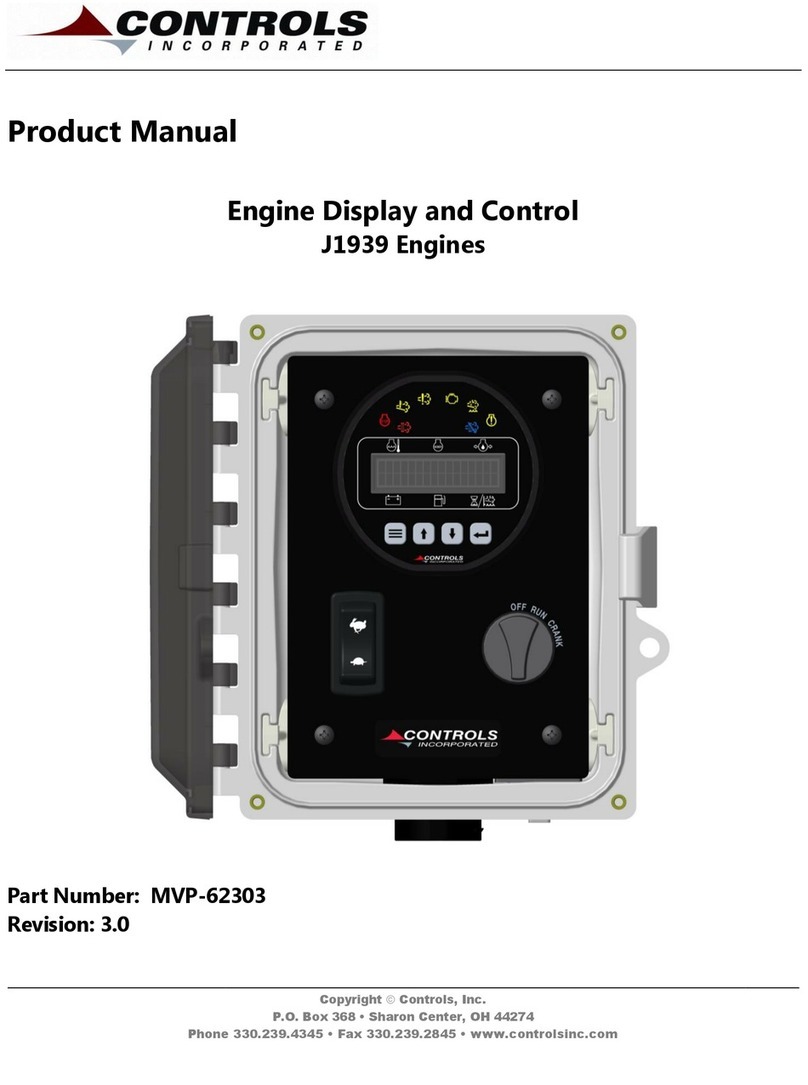
CONTROLS, INCORPORATED
C O N T R O L S Y S T E M S & S O L U T I O N S
- 1 -
1) Introduction
1.1 The G3-100 is a sealed microprocessor-based generator control system for electronic engines with J1939
CAN Bus. It is based on the Controls, Inc. uCAN series controller platform with a Freescale 8 bit processor.
1.2 The module is used for engine management and generator output display and is designed to be used with
an XCAN-AC generator module.
1.3 The product is packaged with electronics housed in water tight, polycarbonate enclosure for maximum
durability.
1.4 The digital display is 1”H x 4”W with two rows of 16 characters. Character height is approximately ½”. The
displayhas automatic temperature compensation for optimal viewing across the entire operating
temperature range of –20C to +70C. Backlight intensity is also adjustable. An extreme temperature option
is available, which extends the operating temp to –45C to +85C and the storage temp to –55C to +95C.
1.5 The unit monitors all critical engine functions and has full time display of Oil Pressure, Engine Temperature,
Battery Voltage, Fuel Rate, and Battery Voltage. AC Voltage, Phase, Current and Frequency are also
displayed for each line.
1.6 Analog Input is available for fuel level monitoring or other functionality.
1.7 Digital Input is available for customer configuration.
1.8 Engine speed control options include:
1.8.1 TSC Manual –Engine speed is controlled over the J1939 CAN Bus. Minimum and maximum
speed can be set in the panel along with the ramp rate.
1.8.2 TSC MultiState–Engine speed is controlled over the J1939 CAN Bus. Up to three unique speeds
can be programmed and incremented between using the up and down buttons.
1.8.3 Off –Engine speed is not adjusted using the panel.
1.9 Engine alarm codes are monitored with corresponding amber or red LED illuminations above the digital
display. Text messages along with the trouble code are displayed automatically.
